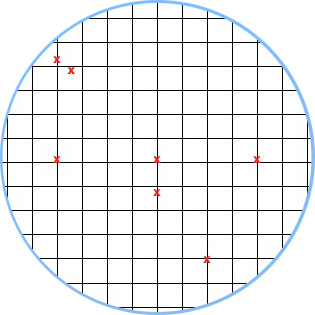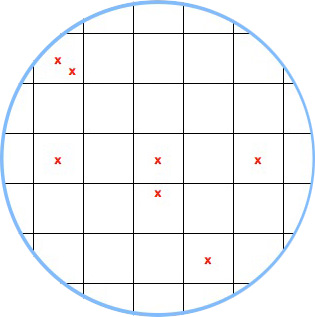The RV870 Story: AMD Showing up to the Fight
by Anand Lal Shimpi on February 14, 2010 12:00 AM EST- Posted in
- GPUs
Process vs. Architecture: The Difference Between ATI and NVIDIA
Ever since NV30 (GeForce FX), NVIDIA hasn’t been first to transition to any new manufacturing process. Instead of dedicating engineers to process technology, NVIDIA chooses to put more of its resources into architecture design. The flipside is true at ATI. ATI is much less afraid of new process nodes and thus devotes more engineering resources to manufacturing. Neither approach is the right one, they both have their tradeoffs.
NVIDIA’s approach means that on a mature process, it can execute frustratingly well. It also means that between major process boundaries (e.g. 55nm to 40nm), NVIDIA won’t be as competitive so it needs to spend more time to make its architecture more competitive. And you can do a lot with just architecture alone. Most of the effort put into RV770 was architecture and look at what it gave ATI compared to the RV670.
NVIDIA has historically believed it should let ATI take all of the risk jumping to a new process. Once the process is mature, NVIDIA would switch over. That’s great for NVIDIA, but it does mean that when it comes to jumping to a brand new process - ATI has more experience. Because ATI puts itself in this situation of having to jump to an unproven process earlier than its competitor, ATI has to dedicate more engineers to process technology in order to mitigate the risk.
In talking to me Carrell was quick to point out that moving between manufacturing processes is not a transition. A transition implies a smooth gradient from one technology to another. But moving between any major transistor nodes (e.g. 55nm to 45nm, not 90nm to 80nm) it’s less of a transition and more of a jump. You try to prepare for the jump, you try your best to land exactly where you want to, but once your feet leave the ground there’s very little to control where you end up.
Any process node jump involves a great deal of risk. The trick as a semiconductor manufacturer is how you minimize that risk.
At some point, both manufacturers have to build chips on a new process node otherwise they run the risk of becoming obsolete. If you’re more than one process generation behind, it’s game over for you. The question is, what type of chip do you build on a brand new process?
There are two schools of thought here: big jump or little jump. The size refers to the size of the chip you’re using in the jump.
Proponents of the little jump believe the following. In a new process, the defect density (number of defects per unit area on the wafer) isn’t very good. You’ll have a high number defects spread out all over the wafer. In order to minimize the impact of high defect density, you should use a little die.
If we have a wafer that has 100 defects across the surface of the wafer and can fit 1000 die on the wafer, the chance that any one die will be hit with a defect is only 10%.

A hypothetical wafer with 7 defects and a small die. Individual die are less likely to be impacted by defects.
The big jump is naturally the opposite. You use a big die on the new process. Now instead of 1000 die sharing 100 defects, you might only have 200 die sharing 100 defects. If there’s an even distribution of defects (which isn’t how it works), the chance of a die being hit with a defect is now 50%.

A hypothetical wafer with 7 defects and a large die.
Based on yields alone, there’s no reason you’d ever want to do a big jump. But there is good to be had from the big jump approach.
The obvious reason to do a big jump is if the things you’re going to be able to do by making huge chips (e.g. outperform the competition) will net you more revenue than if you had more of a smaller chip.
The not so obvious, but even more important reason to do a big jump is actually the reason most don’t like the big jump philosophy. Larger die are more likely to expose process problems because they will fail more often. With more opportunity to fail, you get more opportunity to see shortcomings in the process early on.
This is risky to your product, but it gives you a lot of learning that you can then use for future products based on the same process.










132 Comments
View All Comments
ThomasS31 - Monday, February 15, 2010 - link
...it would be very interesting if nVidia tell us the story openly, what happened with this long delayed newly designed chip.Anand staff, please try and persuade them to tell all details! :)
XiZeL - Monday, February 15, 2010 - link
dont want to look like a fanboy here but these stories just make me like ATI even more, make me feel like part of the familiy...why dont you guys ever write these about nVidia?
Anand Lal Shimpi - Monday, February 15, 2010 - link
The only reason I'm able to write something like this is because of how open/honest/unmarkety Carrell Killebrew is. And how trusting AMD PR is that they allow me to talk to him without any sort of limitations in place.Until recently, there hasn't been a similar contact for me at NVIDIA. That has changed in the past few months and I've already reached out to him to see if he is willing to allow me the same opportunity to talk about Fermi.
If I can make it happen, I will :)
Take care,
Anand
XiZeL - Tuesday, February 16, 2010 - link
thanks for the reply :)just for the record, as a costumer and someone who really likes technology, these kind of articles will help me take my final descision when bying a product...
yeally looking forward to seeing the same from Nvidia and try to understand their aproach on building a chip :)
thanks again
Mat3 - Monday, February 15, 2010 - link
I really enjoy reading stuff like this. One request for the next time you're talking to ATI guys: can you ask them about Fast14 and why it didn't work for them?Iketh - Monday, February 15, 2010 - link
6900 series = Pagan6800 series = Sarigan
6700 series = Saipan
6600/5500 series = Tinian
6400 series = Rota
Im probably way off lol
hyvonen - Monday, February 15, 2010 - link
Leaker! You'll be reported.XtremeOne - Monday, February 15, 2010 - link
Thank You for this beautiful and insightful article. Like many before me, i registered just to say that. Anandtech is one of the sites I fell very lucky to know about. Some of your articles are a bit "techie" for me, but this one is practically impossible to stop reading. :D Thank you Anand.Iketh - Monday, February 15, 2010 - link
it's a shame there cant be more articles like this... having a close relationship with one company allows it every year or two, but there are many companies in this field which could produce many more stories... i feel Anand is slowly tapping into a gold minejstall - Monday, February 15, 2010 - link
This is a fantastic article, nice to get some insight into the the RD and thought process just as much as it is to see performance charts. Be nice to see a little more of this.